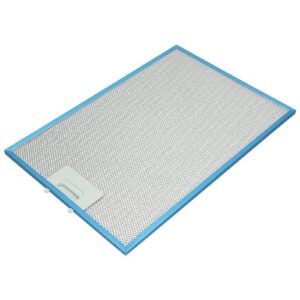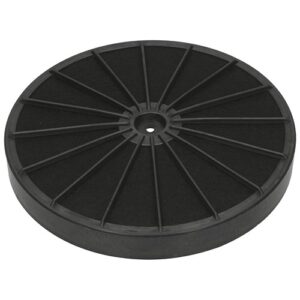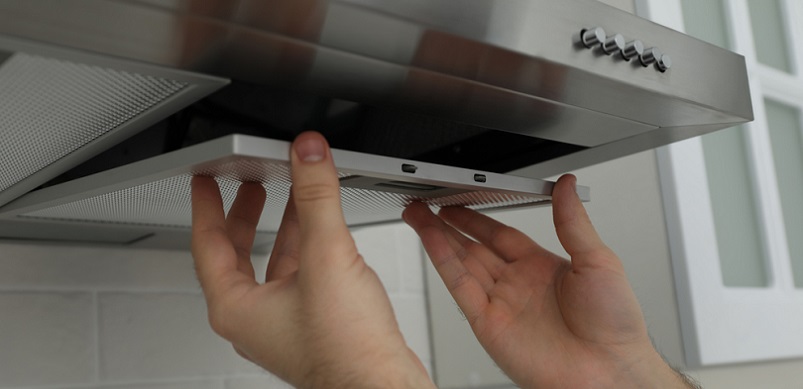
All you need to know about the 3 different types of cooker hood filters
November 8, 2021 | Cleaning Tips | General Appliance Care & Advice | Kitchen Appliances Repair, Help & Advice | No comments
When it comes to maintaining your home appliances, it’s easy to forget about the little things. Among those little things are cooker hood filters. And, as out-of-sight as they can be, they serve quite an important purpose.
Cooker hood filters keep the air in your kitchen clean, so it’s important to know how they work and how to maintain them. So, without further ado, read on to learn all you need to know about the three different types of cooker hood filters!
What are cooker hood filters and what do they do?

To understand the role that cooker hood filters play in your kitchen, you first need to understand cooker hoods themselves. Cooker hoods are used to either vent or recirculate the air in your kitchen via an electric fan. By removing odours, grease and moisture from the air whilst you cook, cooker hoods keep the air in your home clean and healthy.
Generally, there are two kinds of cooker hoods; one that vents the air in your kitchen directly outside, and one that cleans the air before recirculating it back into the kitchen. What filters your cooker hood uses depends on your style of cooker hood, so let’s take a look at the three different types of filters.
Grease Filters
When it comes to grease filters, the clue is in the name. As your cooker hood vents or recirculates the air in your kitchen, the grease filter captures all of the grease in the air. These filters can be found in both types of cooker hoods, as this level of filtration is necessary no matter what the cooker hood’s function is. They are generally found on the inner side of the cooker hood cover panel.

Mesh Filters
Alternatively, your cooker hood may just have a mesh filter instead. When it comes to mesh filters, they serve as both the cover panel for your cooker hood and as the grease filter. Since these filters carry out the same function as grease filters, your cooker hood will most likely have either one or the other.

Carbon Filter
If your cooker hood recirculates the air instead of venting it, however, it will also have a second filter alongside a mesh or grease filter. This is known as a carbon filter. As the air is being recirculated back into your home, the carbon filter removes any bad smells or odours to prevent them from lingering or returning. This filter is not necessary for a cooker hood that simply vents the air, as any odours will simply disappear outside.

Why is caring for your cooker hood filters important?
If your cooker hood filters are not regularly cleaned or replaced when they need to be, your cooker hood will not be able to vent or recirculate the air in your kitchen properly. This will not only result in smells and odours lingering, but it will also keep the air from being cleaned. Without a properly filtered cooking hood, all that grease and cooking moisture you cook up will remain in the air you breathe, which is both unhealthy and unhygienic. As such, it’s important to make sure you keep on top of your filters.
How do you clean or replace your cooker hood filter?

Fortunately, cleaning and replacing your cooker hood filters is a fairly quick and simple task. Here’s how to clean or replace the different types of filters.
Mesh Filters
If your cooker hood has a metal mesh filter instead of a fabric one inside, it will need to be cleaned every three to four months. To clean your mesh filter, you first need to remove it from the cooker hood. This is generally easy to do, but you may need a screwdriver at hand to help you remove it. Then, simply spray both sides of the mesh filter with a filter cleaner spray and leave it to soak for ten minutes. Afterwards, give the filter a thorough rinse, allow it time to dry then return it back to its place in the cooker hood. Alternatively, you can often wash this type of filter in your dishwasher but check the manual first to make sure this is possible for your model of cooker hood.
Grease Filters
If your cooker hood has a grease filter inside the cover panel, it will need to be replaced when it gets dirty. This is generally between every three to six months, and you will know if it is dirty because it will look discoloured and saturated. Some filters also have a colour changing saturation indicator to help you know exactly when it’s time for a filter change.
To access the grease filter, simply remove the cover panel. As mentioned above, this is usually easy to do but may require a screwdriver. Then, if your grease filter looks dirty and is in need of changing, simply remove it and replace it with a new one before refitting the cooker hood cover panel.
Carbon Filters
With carbon filters, you should generally replace them about once every four months. Before you purchase a replacement carbon filter, however, you will need to know your cooker hood model number. This can usually be found on a sticker either somewhere on the exterior of your cooker hood, or inside when you remove the mesh filter or cover. The model number will consist of a combination of numbers and letters and may include other symbols such as a slash (/) or a dash (-).
Once you’ve got hold of a replacement carbon filter, the replacement is quick and easy. Simply remove your cooker hood cover or mesh filter (as described above in the grease filters section above) and twist the carbon filter anti-clockwise to release it. Then replace it with the new filter, turning it clockwise to secure it in place.

And there you have it! All you need to know about maintaining the three different types of cooker hood filters. Hopefully, you should now be able to keep your cooker hood running smoothly and the air in your kitchen clean.
For help with knowing when and how to clean or change the filters in other appliances around your household, check out our blog post on checking your filters.


